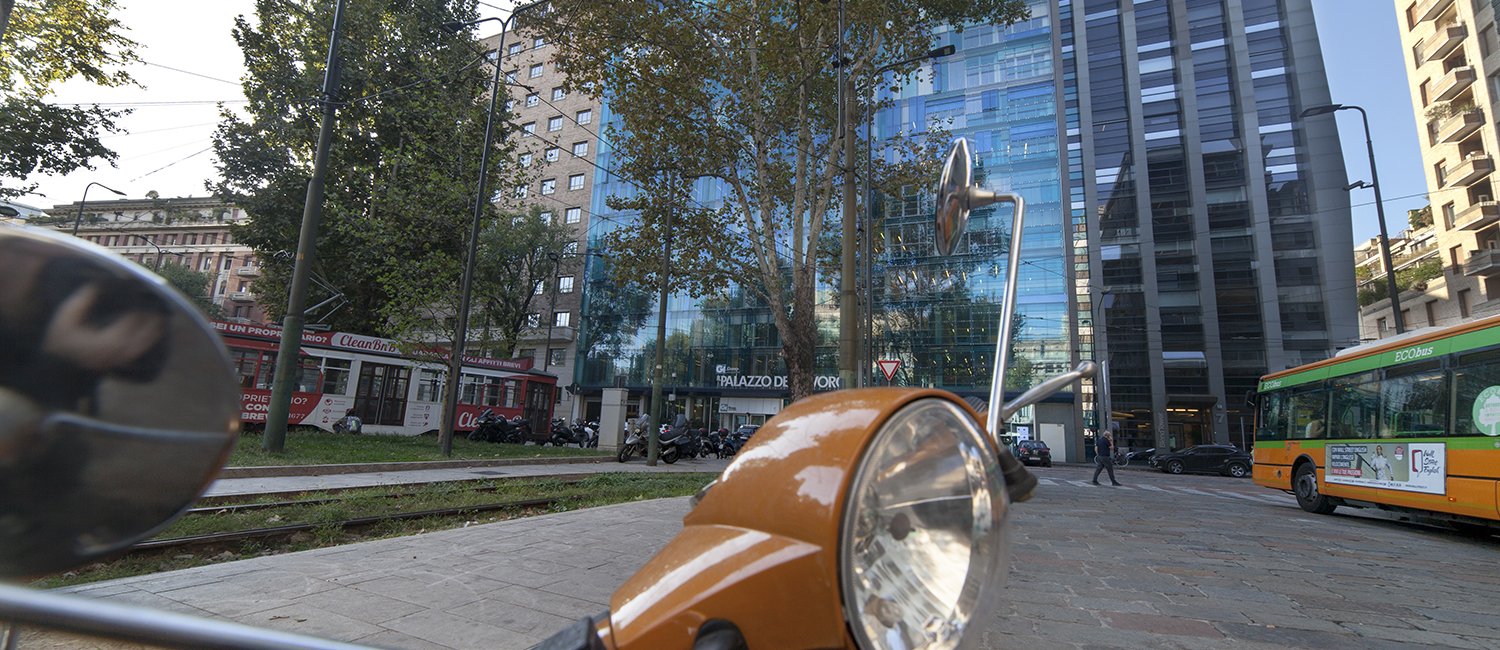

Some simple data helps us to understand how quickly Milan developed between the late 19th century and the first decades of the 20th century.
Around 1880, approximately 98% of the factories in Milan were inside the city walls, and about 47% of these were located within the Navigli canal area; in subsequent decades, the factories were progressively moved away from the historical centre, into areas outside the Ramparts, where cheaper space was more readily available.
The development of economic activities was accompanied by an increase in the urban population: within the current municipal boundaries, in 1931 Milan had 992,000 inhabitants and the hegemonisation of the provincial territories meant that the city was home to 50% of the total population. This development attracted immigrants firstly from the surrounding areas and subsequently from the more depressed areas of Lombardy, Veneto and thereafter other Italian regions. The urban face of the city changed in this period. The city’s widespread development in the 1930s led to the growth of the factories mainly to the northern districts.
And Cima1915, by then owned by Giovanni Pomati, was directly involved in this process. The premises located in Largo Donegani were soon found to be inadequate for coping with the company’s expected growth. Attention focused on the area to the north of Piazza Andrea Doria, where the Pomati family owned land, near the Trotter Italiano where the Milan football team home games were played. However, the plans for the New Central Station upset this idea. From the late 19th century, Central Station, built at the will of Victor Emmanuel II and inaugurated in 1864 where Piazza Repubblica stands today, was insufficient for the growing numbers of passenger and goods traffic in the new metropolis. From 1925, driven by the Fascist regime which saw the project as a precious opportunity for legitimisation, the works were in full swing and the Pomati land was confiscated for the purpose. The New Central Station was inaugurated in 1931, with 24 tracks, compared to the 6 tracks at the old station.
Giovanni Pomati found a building at 3-5 Via Ponte Sesto, and here the second headquarters of Cima1915 were established. The area was changing rapidly, and its vicinity to the New Station made it a highly strategic district. For example, it is said that the shop on the corner, once managed by Giorgio Re, chairman of the Milan tobacconists’ association, was registered as “tobacco retailer no. 1” in the whole of Milan. And if we look for signs of nobility, it is impossible not to notice the Liberty façade of the building at number 31, bearing witness to what many people in the city considered an “open-air shopping centre” due to its many clothing, footwear and household goods shops.
Visiting Via Ponte Seveso today to search for Cima’s roots, we come across a curious anomaly: the first street numbers are missing (they start at 17 on the odd side and 18 on the even side). What about all the others? They’re not there anymore. They were swallowed up by the nearby Via Filzi, which runs alongside Central Station. How could this be?
When the new railway station was built, the areas immediately next to the impressive construction had to be redesigned, not only to allow access for public and private transport but also to fit the building into an equally grandiose architectural context. The revised urban layout led to the creation of Piazza IV Novembre and the extension of Via Fabio Filzi as far as the crossroads with Via Tonale, to the detriment of Via Ponte Seveso. The second headquarters of Cima1915 were thus located in the building which today houses the Palazzo del Lavoro, in Piazza IV Novembre 5.
110 years of family business history
Scan the QR code on the label of each CIMA product
All eyes on electric propulsion in Amsterdam from 19-21 November
A floating lab created to develop electric propulsion
Cima1915 back to METS
Cima1915 at Electric & Hybrid Marine Expo Europe
Cima1915 motor wheel drives RCM to the Amsterdam Innovation Award 2022
Cima1915 Events
Stables automation
Deigma by Cima1915
New G2190, the XXL Motor Wheel
The role of the electric motor in Hydraulic Power Packs
There is increasing talk of 'Green Deal' in agriculture
CIMA1915 is facing the COVID emergency with an investment in Technology
CIMA1915 latest-generation novelties in a movie.
Quality takes another step forward
Warm reception at METS for Deigma
Preview at METS Trade, Amsterdam: Cima1915 presents Deigma
1930: Cima and the inauguration of the new Stazione Centrale
Cima1915 at METS Trade in Amsterdam
Today more than 500,000 vessels are equipped with Cima1915
Assistance Cima1915: we are always ready (although its is likely that you won’t need it) ;-)
The daily job of the 3D testing machine at Cima 1915
1915: Cima’s beginnings in Largo Donegani
Green Vocation - Cima 1915 in the fore promoting an authentic green economy
Lateral with SuperElastic, the most innovative solution for outdoor use
New products: new dimensions for G2 190
Automation in farming becomes a reality